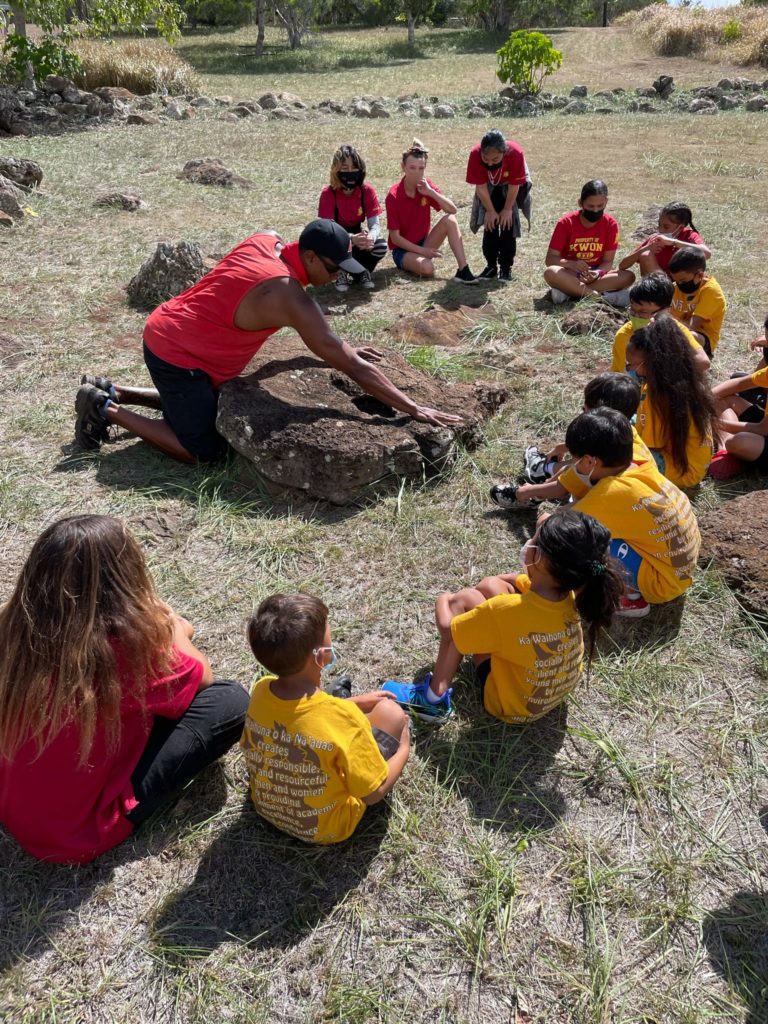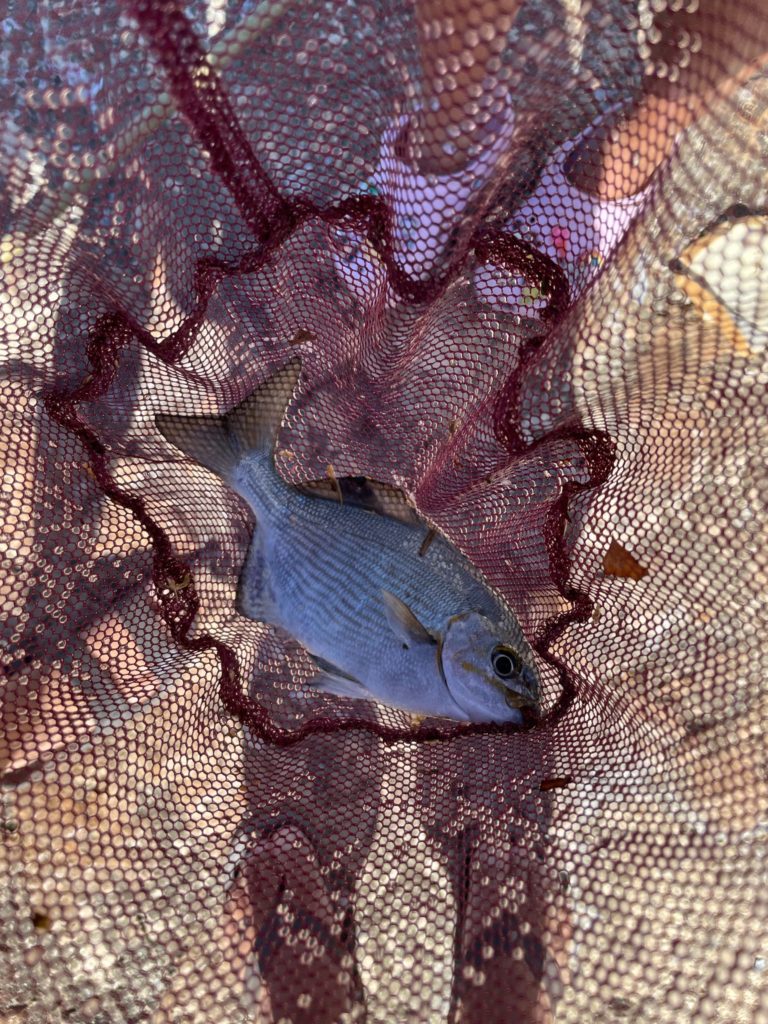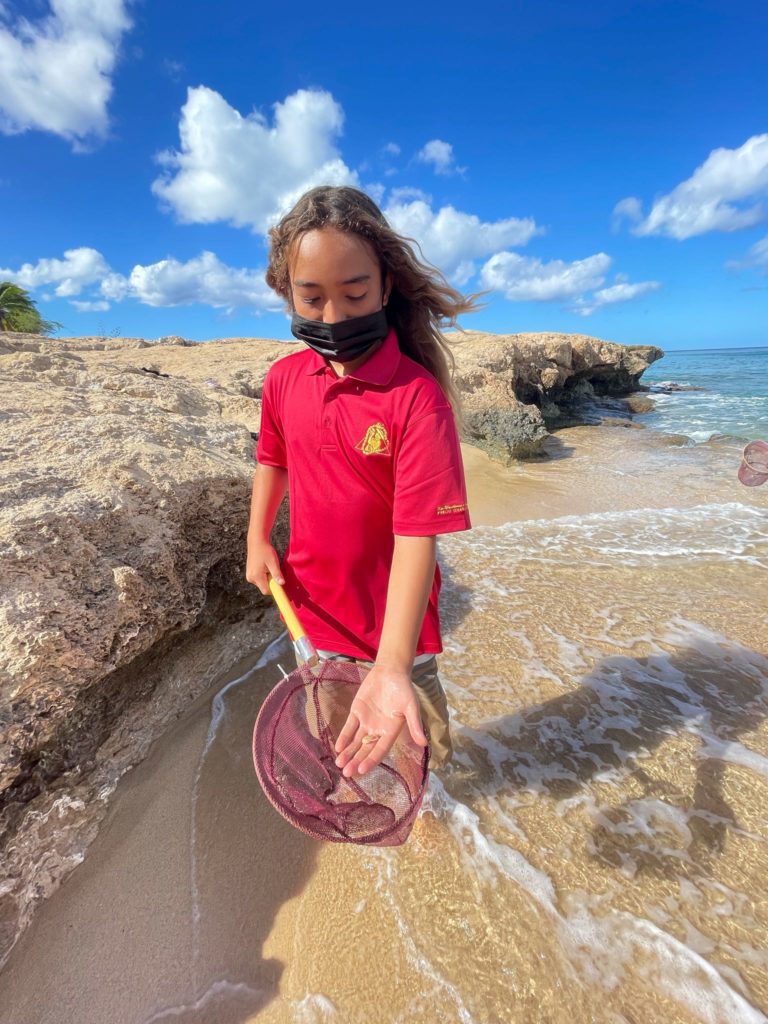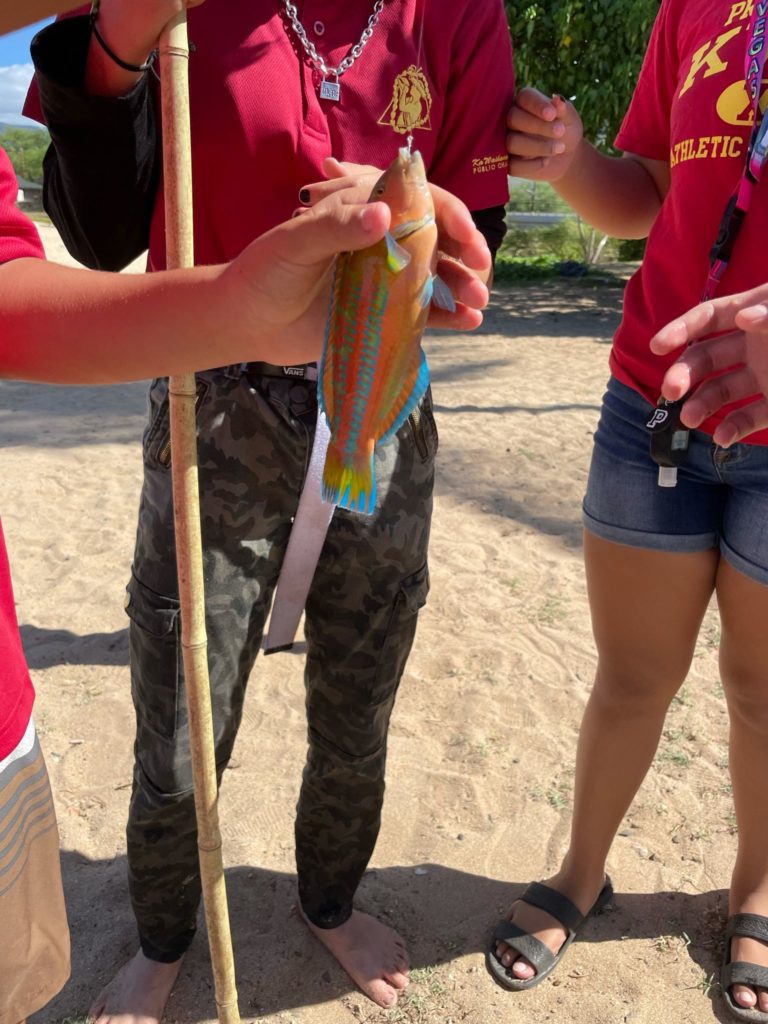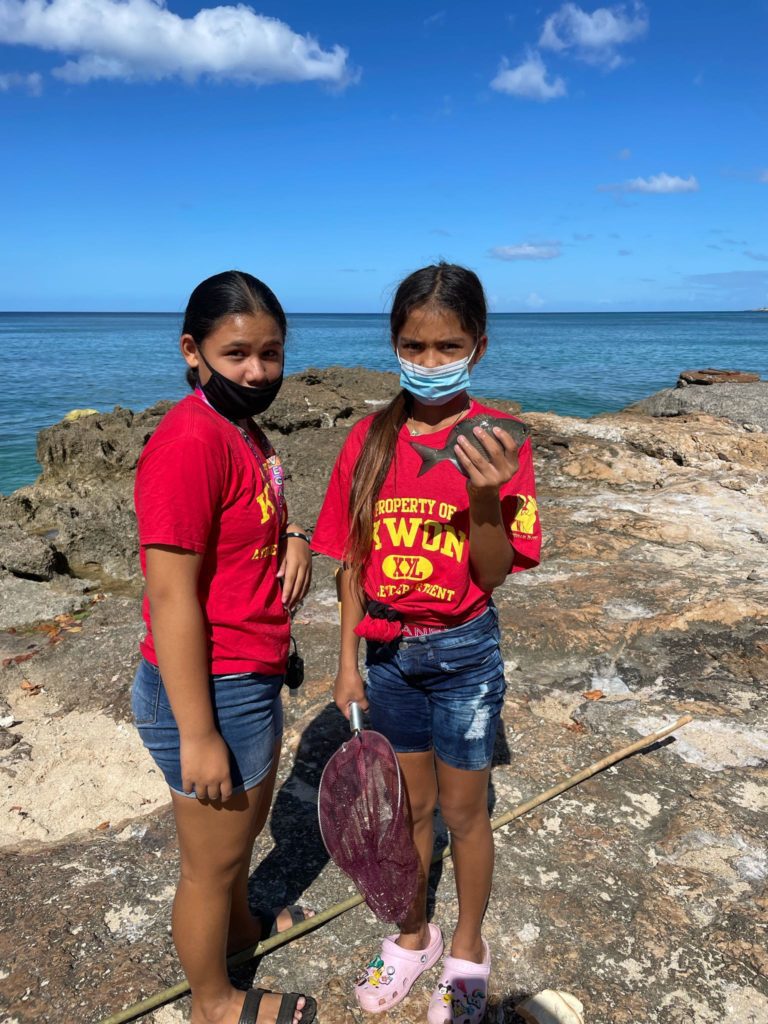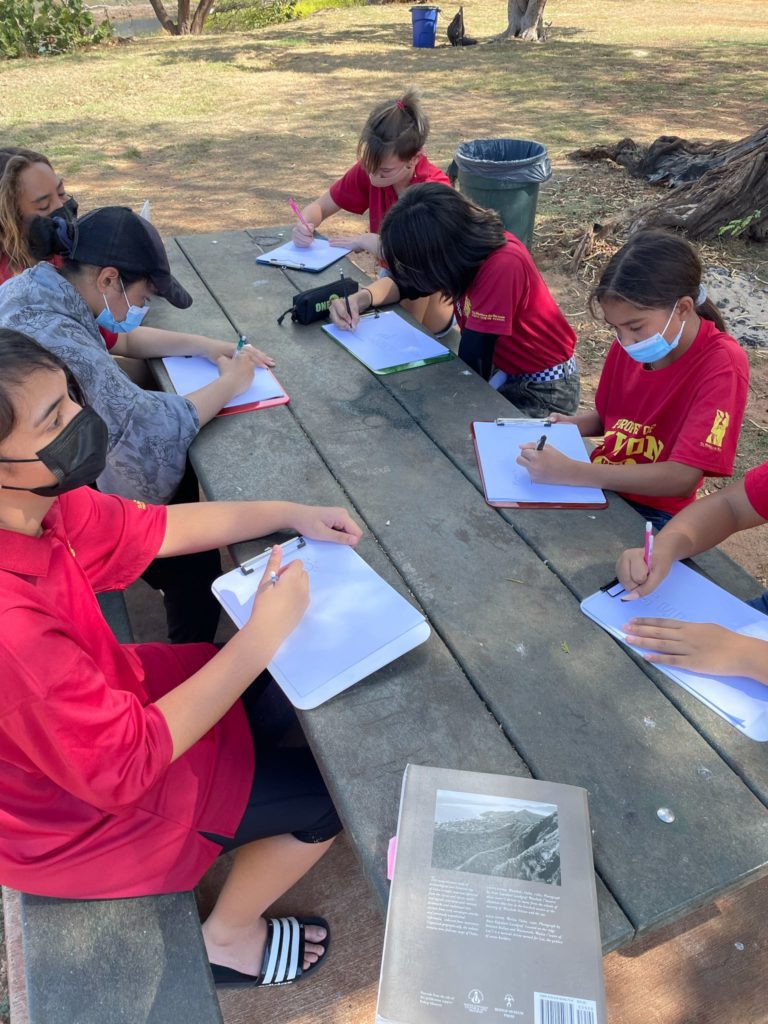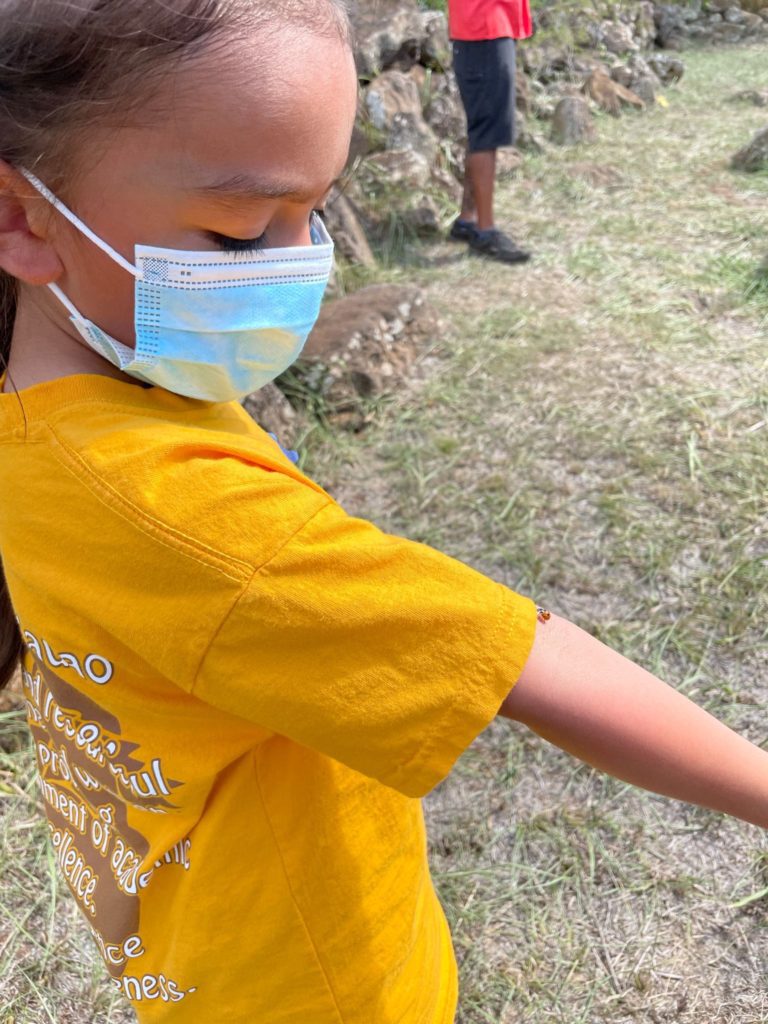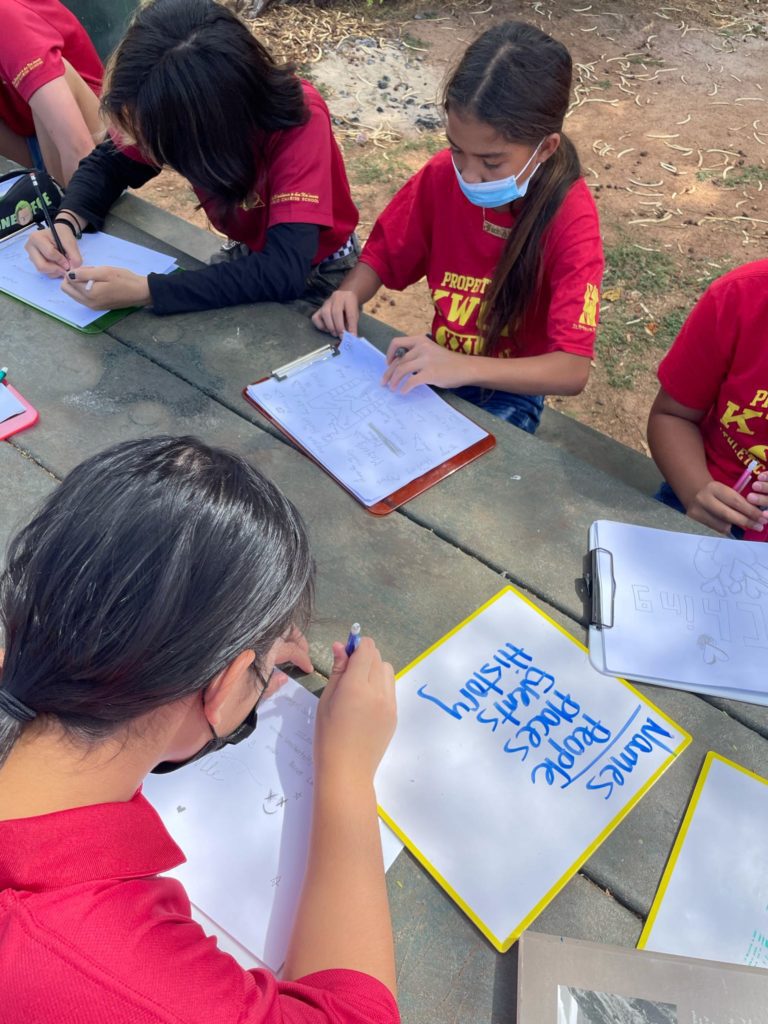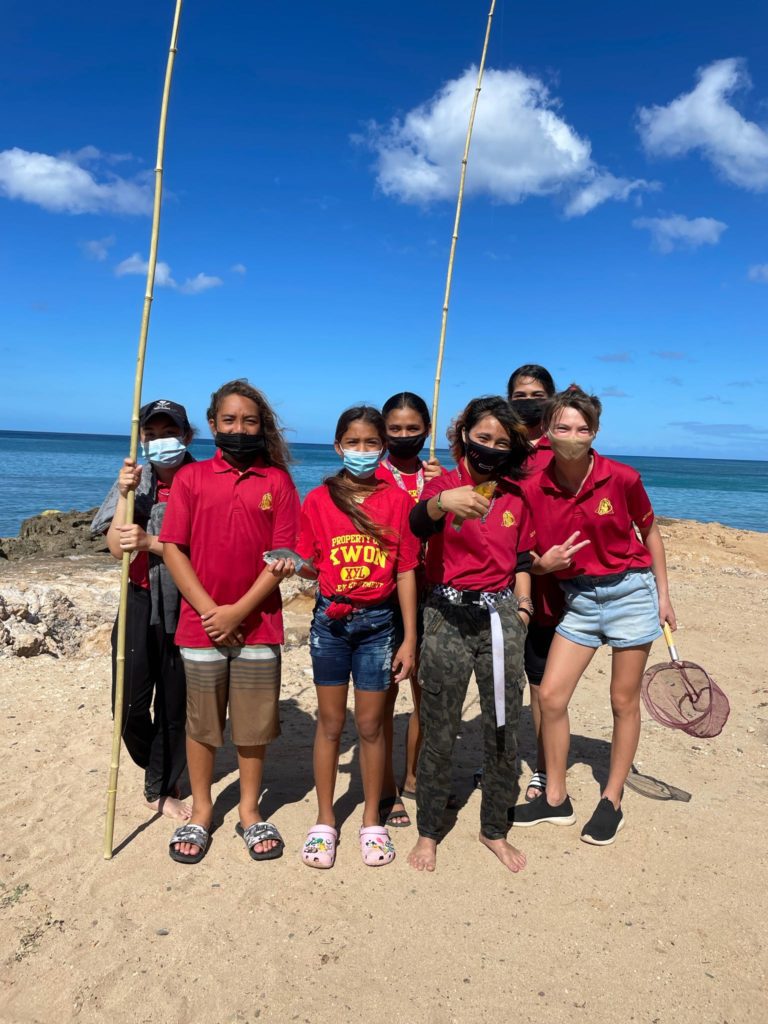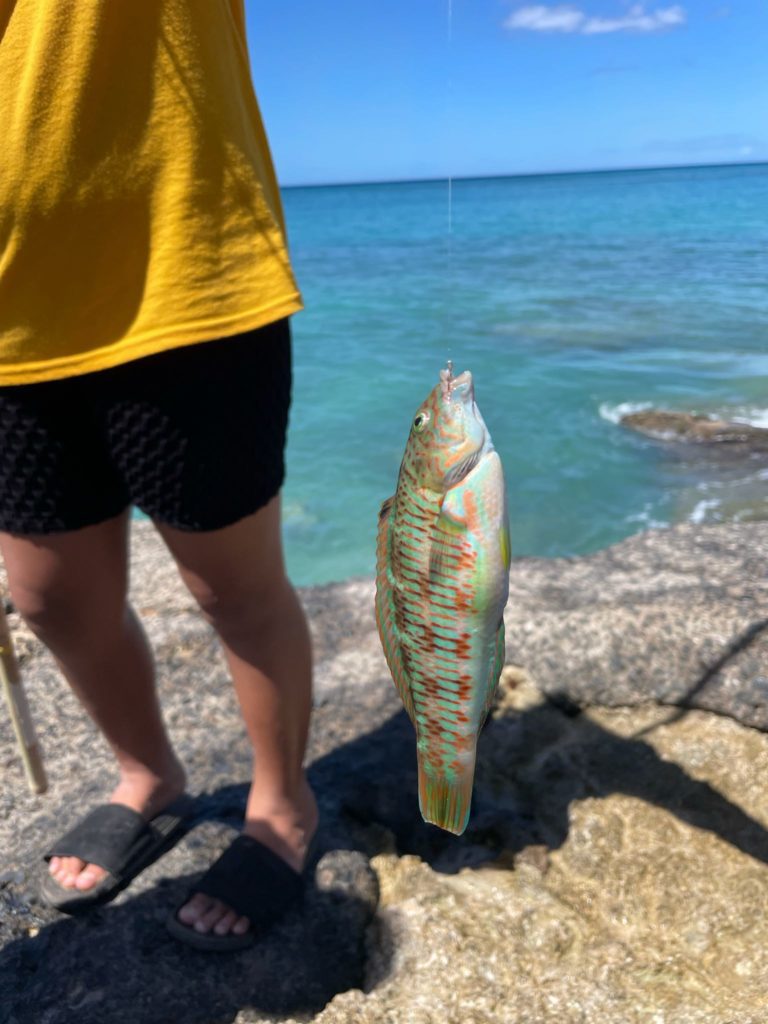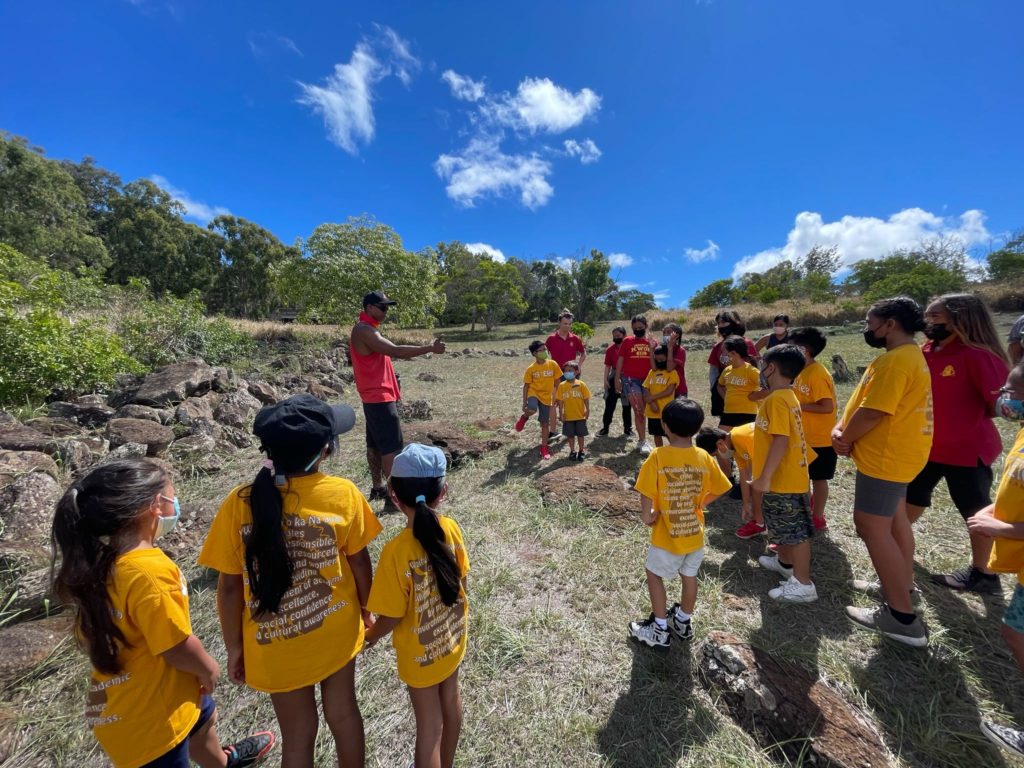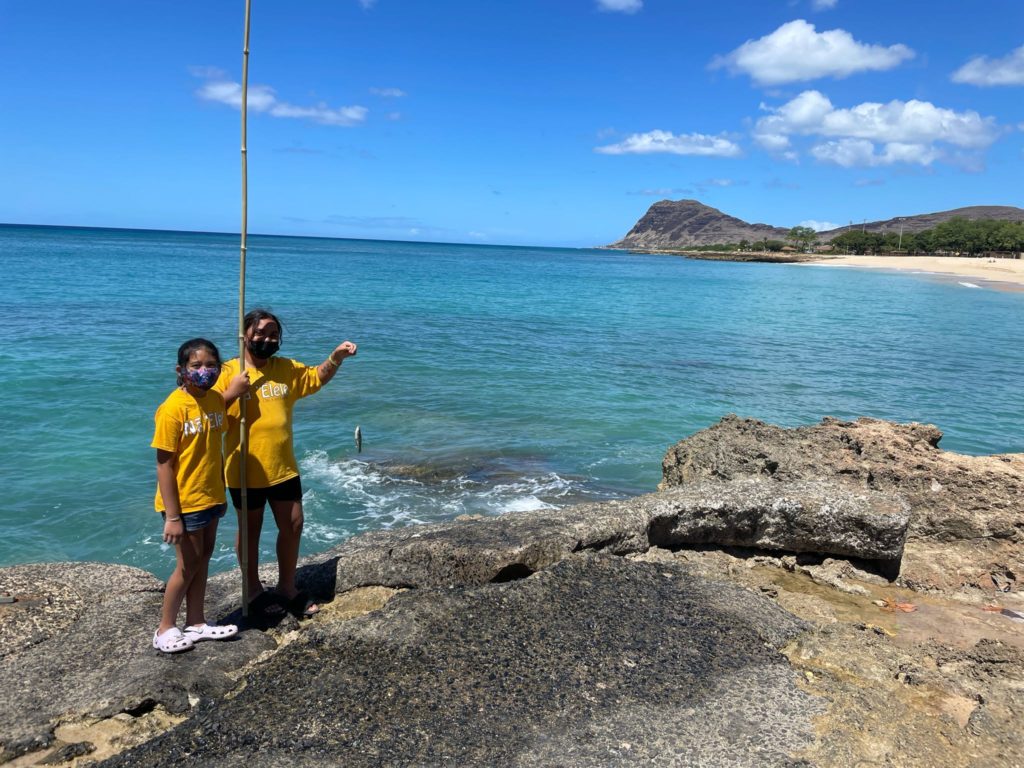School: Ka Waihona o Ka Naʻauao
Grade Level: Grade 7-8
Teacher: Dariess Ah Sui and Charmaine Woodward
Driving Question: What can we learn using the practice of kilo (keen observation) that will help us better understand our world? How do kiaʻi loko iʻa (fishpond caretakers) merge traditional knowledge with modern science and technology? How are kiaʻi (caretakers) using sensor technology to complement their work to restore and manage loko iʻa?
What did the students DO?
The study with kiaʻi loko iʻa was part of a year-long project involving the practice of kilo driven by the overarching and essential questions above. In the third quarter of school, students participated in virtual huakaʻi (field trips) to four loko iʻa (fish ponds) around the state of Hawaiʻi to study the relationship between Western scientific data collection methods and the Hawaiian ancestral practice of kilo — keenly observing one’s environment using one’s whole self, all of one’s senses, to understand, know, acknowledge and be involved with systems in our natural world. Before each virtual visit, kiaʻi provided students with background information including the history of their fishponds and surrounding area, moʻolelo (stories) associated with their pond, and species particular to their sites (i.e., fish, plants, and birds). Students then visited each fishpond and interacted with kiaʻi learning how they applied both modern (i.e., water quality sensors) and traditional (i.e., kilo) methods in their work to determine the health of the fishpond. Data regarding dissolved oxygen spikes, water turbidity, algae growth, effects of agricultural run-off, and the effects of invasive mangrove and other species on the ponds are made using both methods. Kiaʻi engaged students in discussion and question and answer sessions as they toured students around their sites.
Following each visit, a second virtual interaction took place allowing students and kiaʻi to have hands-on experiences including preparing and eating limu (seaweed) salad, rope making, and rain cycle models. All of the materials and ingredients came from the loko iʻa or were store purchased but could be gathered from the various sites if students had been able to visit in person. Other community partners further enhanced the experience by providing original coloring pages particular to each loko iʻa for students to color as they “talked story” with the artists who shared traditional stories about the fishpond life depicted in the coloring pages.
Student reflections indicated that the virtual visits and the follow up hands-on activities were engaging and thought provoking. One student wrote that she remembers pounding the ʻahu ʻawa stem, noticing the fibers were wet, and then wondering what other uses this plant had in Hawaiʻi and what made Hawaiians think of using the plant for rope making. Another student said his experience with the limu salad was “magnificent” and that now he would teach his family how to make it so they could make it together. A third student said he was thankful for learning how to make the limu salad because his family enjoyed it and ate it all up.
Place-Based Field Experiences/Connections
Students had virtual field trips and interacted on-line with kiaʻi from four Hawaiʻi fishponds: Paepae o Heʻeia (Oʻahu), Alakoko (Kauaʻi), Loko Ea (Oʻahu), and Waikalua (Oʻahu). Their interactions and follow-up activities are briefly mentioned above. They also worked with local artist, Prime Hina, and his 808 Urban team on the coloring pages.
